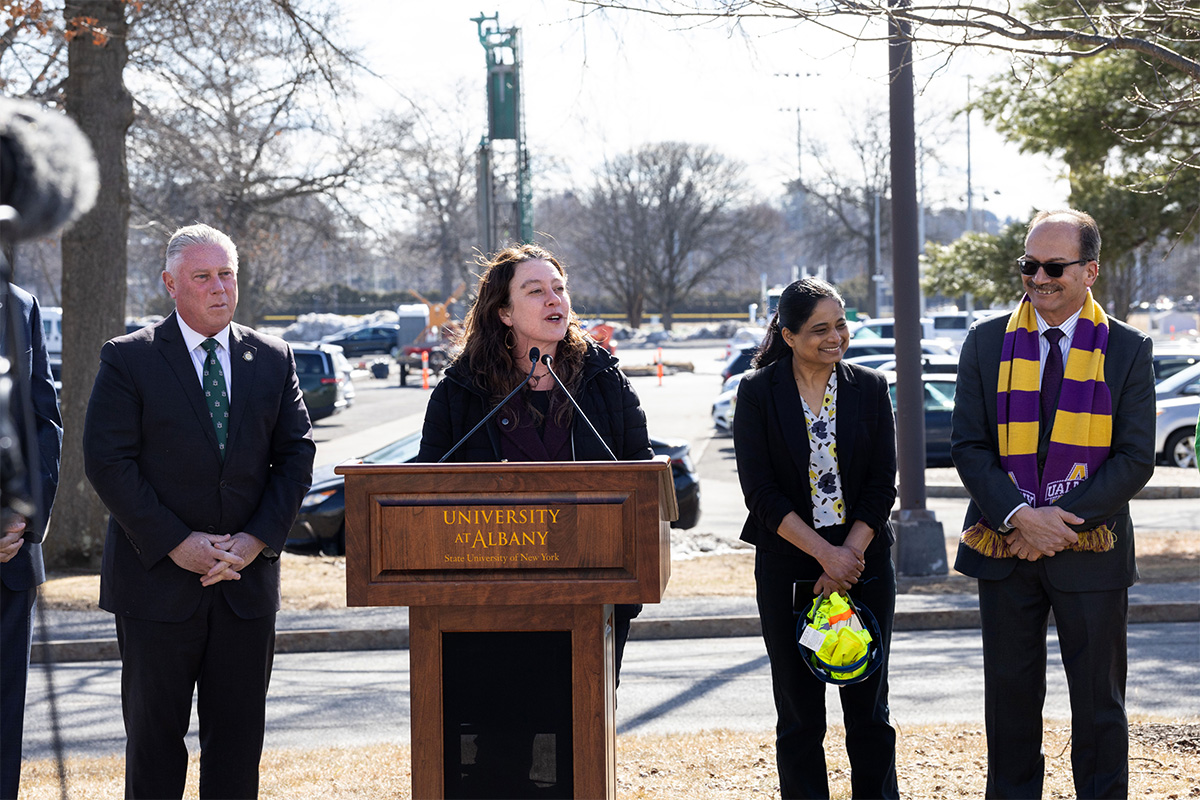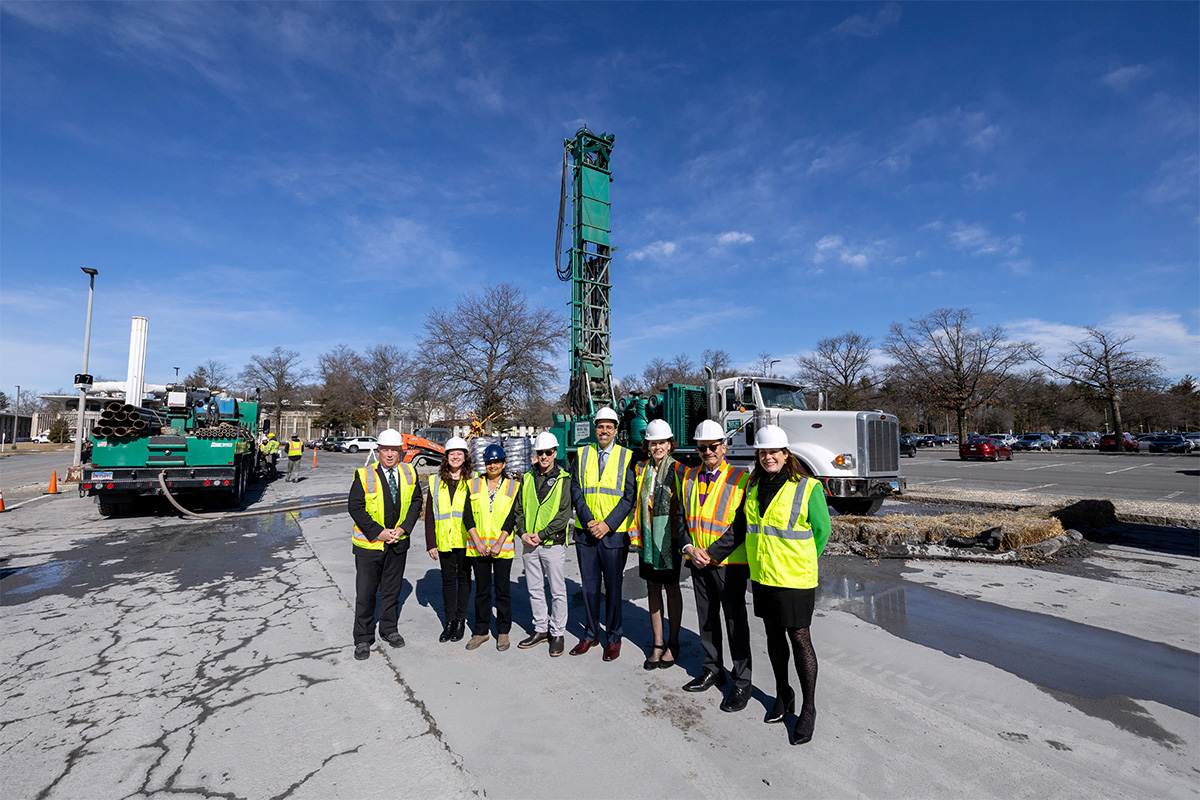
From the Campus to the State: SUNY Leads By Example
The Building Decarbonization Coalition joined Capital Region leaders at the State University of New York at Albany to celebrate breaking ground on its $30 million decarbonization project

Photo by Patrick Dodson/University at Albany
“SUNY is proving that it can be the climate champion New York needs. Let’s keep the momentum going.”Lisa Dix, New York Director, Building Decarbonization Coalition
More than a third of New York state’s emissions come from buildings. To the State University of New York at Albany (UAlbany), that statistic isn’t reason to fear — it’s an opportunity to transform.
On March 10, leaders from UAlbany, the UpgradeNY collaboration, and the New York State Senate and Assembly gathered to break ground on a decarbonization project that will make summers on campus healthier, cooler, and more comfortable. A thermal energy network (TEN) will expand building cooling capacity — an essential upgrade as the Capital Region experiences historically hot summers — while reducing UAlbany’s methane gas consumption by 16%.
The new system eliminates the need for gas-fired boilers and absorption chillers in the summer. A high-efficiency electric centrifugal chiller and a heat recovery chiller, connected to the TEN and a geothermal wellfield, will provide all of the campus’ cooling, summertime heating, and hot water, with funding passed in the State budget in 2023.
“Our tradesmen and tradeswomen look forward to getting started on this project that will help our environment and boost our economy.”Gary LaBerbera, President, NYS Building Trades
The Building Decarbonization Coalition’s New York Director, Lisa Dix, spoke alongside SUNY Chancellor John King, UAlbany President Havidán Rodríguez, UAlbany Energy Officer Indu Lnu, President of the New York League of Conservation Voters Julie Tighe, and Senator Patricia Fahy, and Assemblymember John McDonald III. The construction team drilled test boreholes that will explore two designs to find the best fit for UAlbany’s system.
Universities are excellent candidates for TENs, which provide heating and cooling through a shared network of water-filled pipes that transfer energy in and out of buildings. Campuses and surrounding communities reap the benefits of their investment almost immediately. Colorado Mesa University is one good example, where energy savings from a TEN have helped suppress tuition hikes. Cornell University’s lake-source thermal system is another: it has reduced the energy needed for cooling by 85% annually, and brought over $2 million in value to the City and Town of Ithaca and the city’s school district.
“SUNY is committed to creating and implementing climate solutions like thermal energy networks, and with nearly 3,000 buildings and over 111 million square feet of space, we have a vital role in establishing a cleaner, energy-efficient future and achieving Gov. Hochul’s ambitious climate agenda.”SUNY Chancellor John King
UAlbany is just the beginning. The SUNY system has more than 100 million square feet of buildings across its campuses. All are shining opportunities for the state to lead by example in meeting New York’s climate goals equitably and affordably.

Photo by Patrick Dodson/University at Albany
To that end, UpgradeNY — a collaboration of unions, climate advocates, building industry representatives, and environmental groups — has asked Governor Hochul to allocate $200 million in her executive budget to complete more projects like this on state-owned campuses. Students, staff, and workers at SUNY Purchase, the University at Buffalo, UAlbany’s Downtown Campus, and more locations stand prepared to break ground on their own union-led, zero-emissions construction projects.
“Today this test drilling shows we can decarbonize our state, improve energy efficiency, and create union jobs that power the middle class.”Ed Nadeau, Business Manager, New York State Pipe Trades, Local 7
UAlbany has led by example. We hope to see many more campuses and New York communities show the nation how thermal energy networks can transition entire communities off of fossil fuels while building a clean-energy economy.
